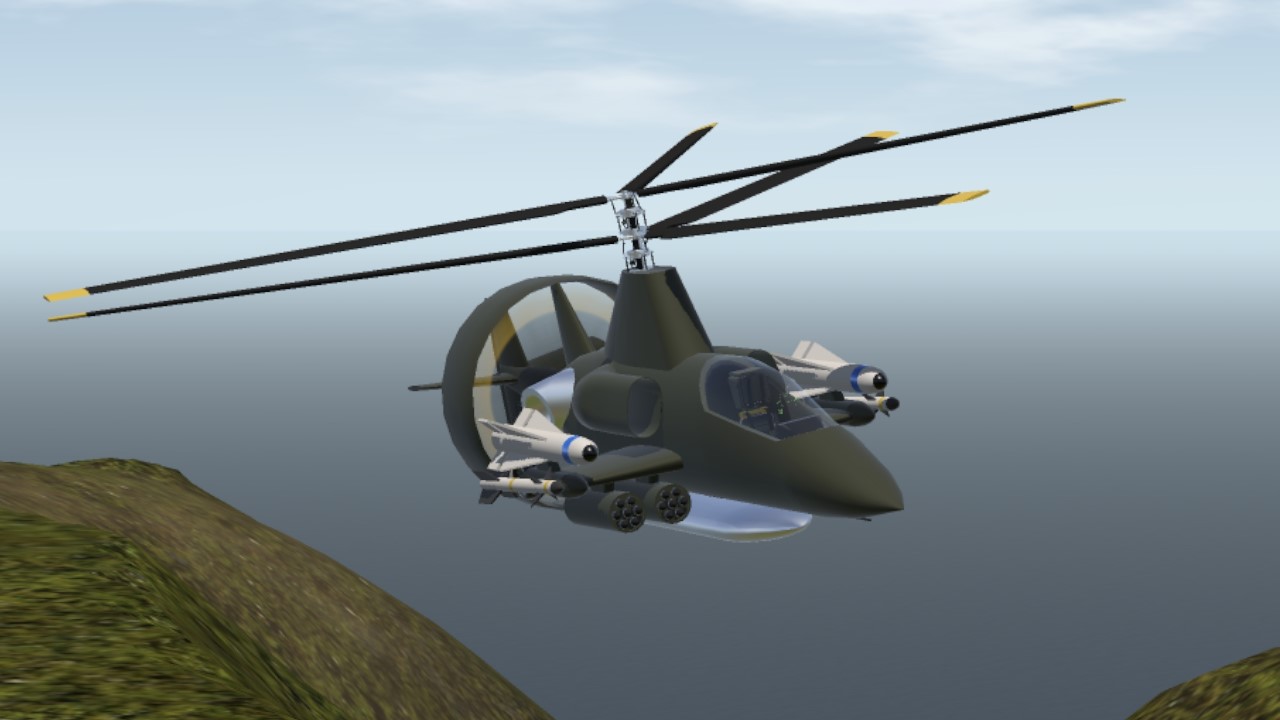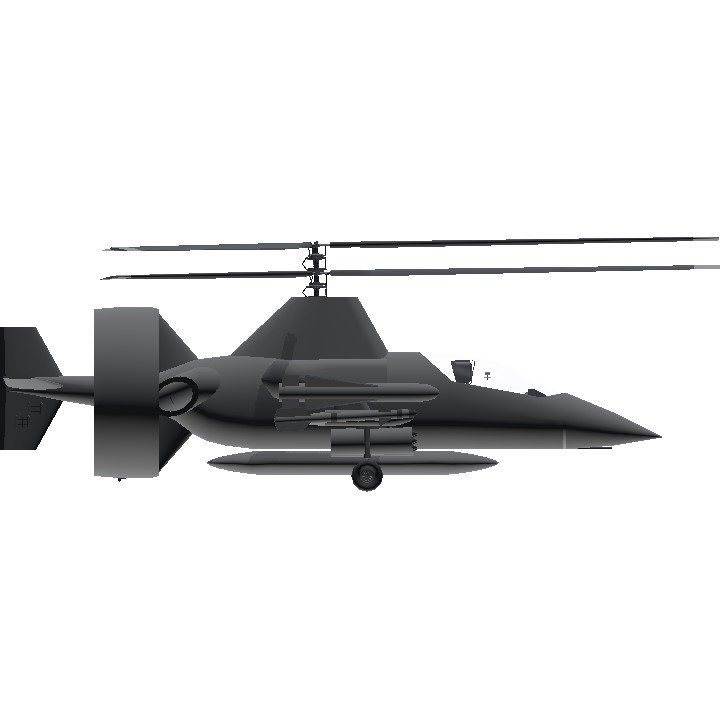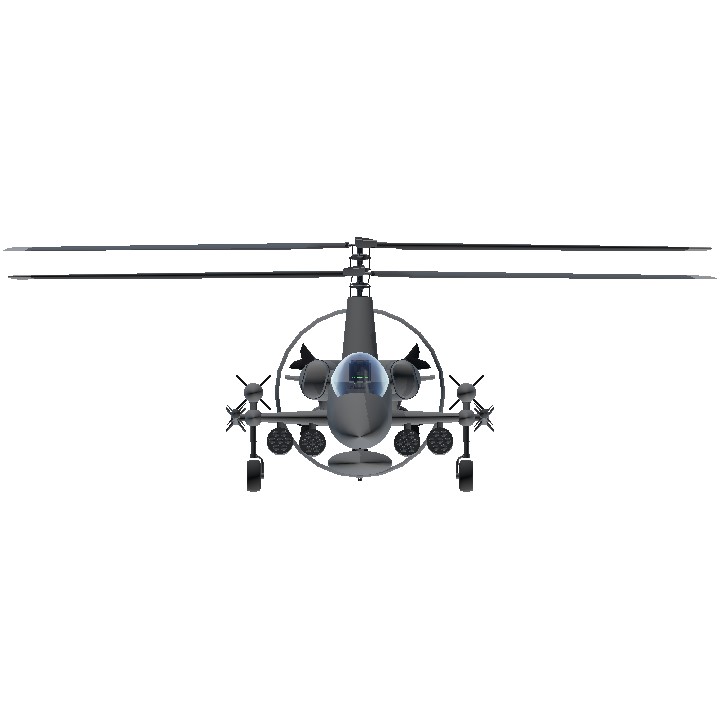Caution Use only on mid/high physics.
Ag4 Assisted piloting
Ag5 jettison rocket pods
Ag6 jettison missiles
Ag7 jettison drop tanks
ATG-1 "Sharkbite" – Attack Turbo Gyro-plane
The ATG-1 "Sharkbite" is a truly lethal and unique hybrid aircraft, blending the versatility of a gyrocopter with the firepower of an attack plane. Its combination of agility and sheer firepower makes it a force to be reckoned with, but its complexity means it requires a highly skilled pilot to master.
With its 6000hp WZ-18 turboprop engine powering the dual counter-rotating pusher props and autogyro blades, the Sharkbite can achieve speeds over 600 km/h, offering impressive maneuverability and rapid response time in the heat of battle. However, its intricate flight dynamics, relying on a delicate balance of lift and thrust, mean that inexperienced pilots may struggle with its unique control requirements. When flown improperly, the Sharkbite’s agility can quickly turn into a deadly flaw, as the aircraft's response can become unpredictable.
Skilled pilots, on the other hand, turn the Sharkbite into a predator in the sky, able to execute pinpoint strikes and outrun threats with ease. The stubby, weaponized wings not only provide mounting points for its formidable arsenal—AGM-64 missiles, AIM-9 air-to-air missile, rocket pods, and a 20mm Bushmaster II chain gun—but also feature rugged landing gear to ensure it can operate from austere and unprepared airstrips, just like a true hunter prowling in hostile environments.
The nose-mounted multi-purpose radar and advanced countermeasures further augment the Sharkbite's ability to handle both reconnaissance and combat missions with surgical precision, while the JHMCS helmet system ensures the pilot has full situational awareness at all times.
Inexperienced pilots may quickly find themselves overwhelmed by the Sharkbite’s responsiveness, making it a dangerous craft to tame. But, for those with the right skills and instincts, the ATG-1 "Sharkbite" becomes a deadly predator in the skies—swift, nimble, and able to strike with deadly precision, just like the shark it’s named after. You may not like it, but this is what peak performance looks like. ~SomeShark(2020)
How auto gyros work :
1. Forward Motion:
The autogyro's propeller moves the aircraft forward.
As the aircraft moves, air flows over the rotor blades, causing them to spin. This is the key difference from helicopters, where the rotor is powered by the engine.
2. Autorotation:
As the rotor blades spin due to the forward motion of the aircraft, they "bite" into the air, creating a pressure difference above and below the blades.
The rotating blades generate lift because the shape of the blades creates lower pressure above and higher pressure below, much like an airplane wing.
The blades are designed with an airfoil shape, so as the aircraft moves, the rotor blades generate a lift force that counteracts the aircraft's weight.
3. Lift Generation:
The rotating blades create enough lift to keep the autogyro in the air. This is typically less efficient than the powered rotor system of a helicopter but works well when combined with the forward thrust from the propeller.
This process allows the autogyro to fly using only the forward motion, relying on the blades' rotation (not an engine) to generate lift.
Specifications
Spotlights
- MIGFOXHOUND31BSM26 16 hours ago
General Characteristics
- Predecessor (Grading, but some late submissions are allowed.)Turboprop attack challenge
- Created On Android
- Wingspan 36.2ft (11.0m)
- Length 36.3ft (11.1m)
- Height 12.7ft (3.9m)
- Empty Weight 14,941lbs (6,777kg)
- Loaded Weight 16,481lbs (7,475kg)
Performance
- Power/Weight Ratio 4.09
- Horse Power/Weight Ratio 0.364
- Wing Loading 180.1lbs/ft2 (879.5kg/m2)
- Wing Area 91.5ft2 (8.5m2)
- Drag Points 4935
Parts
- Number of Parts 699
- Control Surfaces 4
- Performance Cost 2,628





Tag list:
@KPLBall
@MigFoxhound31BSM26
@AeroTactical